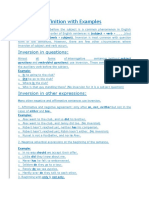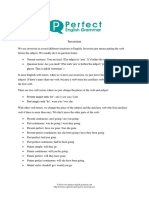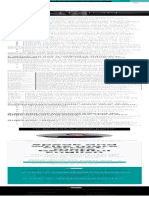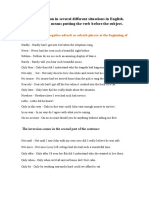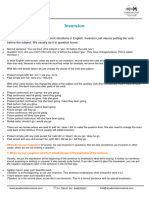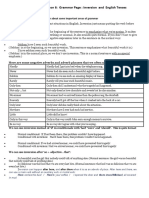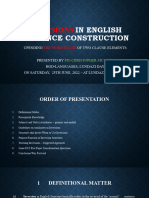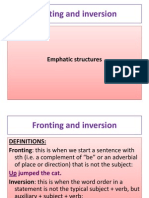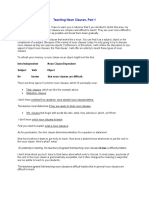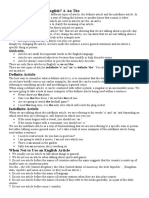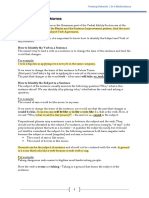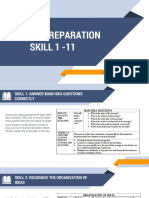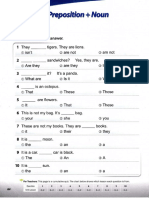0% found this document useful (0 votes)
10 views3 pagesUnderstanding Subject Verb Inversion
The document explains subject-verb inversion in English, highlighting its use in questions, after negative adverbs, in conditional sentences, and with certain expressions like 'so' and 'such'. It provides examples of normal statements and their inverted forms to illustrate these rules. Inversion is noted to be more common in formal writing and is used for emphasis or dramatic effect.
Uploaded by
yaserdak52Copyright
© © All Rights Reserved
We take content rights seriously. If you suspect this is your content, claim it here.
Available Formats
Download as DOCX, PDF, TXT or read online on Scribd
0% found this document useful (0 votes)
10 views3 pagesUnderstanding Subject Verb Inversion
The document explains subject-verb inversion in English, highlighting its use in questions, after negative adverbs, in conditional sentences, and with certain expressions like 'so' and 'such'. It provides examples of normal statements and their inverted forms to illustrate these rules. Inversion is noted to be more common in formal writing and is used for emphasis or dramatic effect.
Uploaded by
yaserdak52Copyright
© © All Rights Reserved
We take content rights seriously. If you suspect this is your content, claim it here.
Available Formats
Download as DOCX, PDF, TXT or read online on Scribd
/ 3






